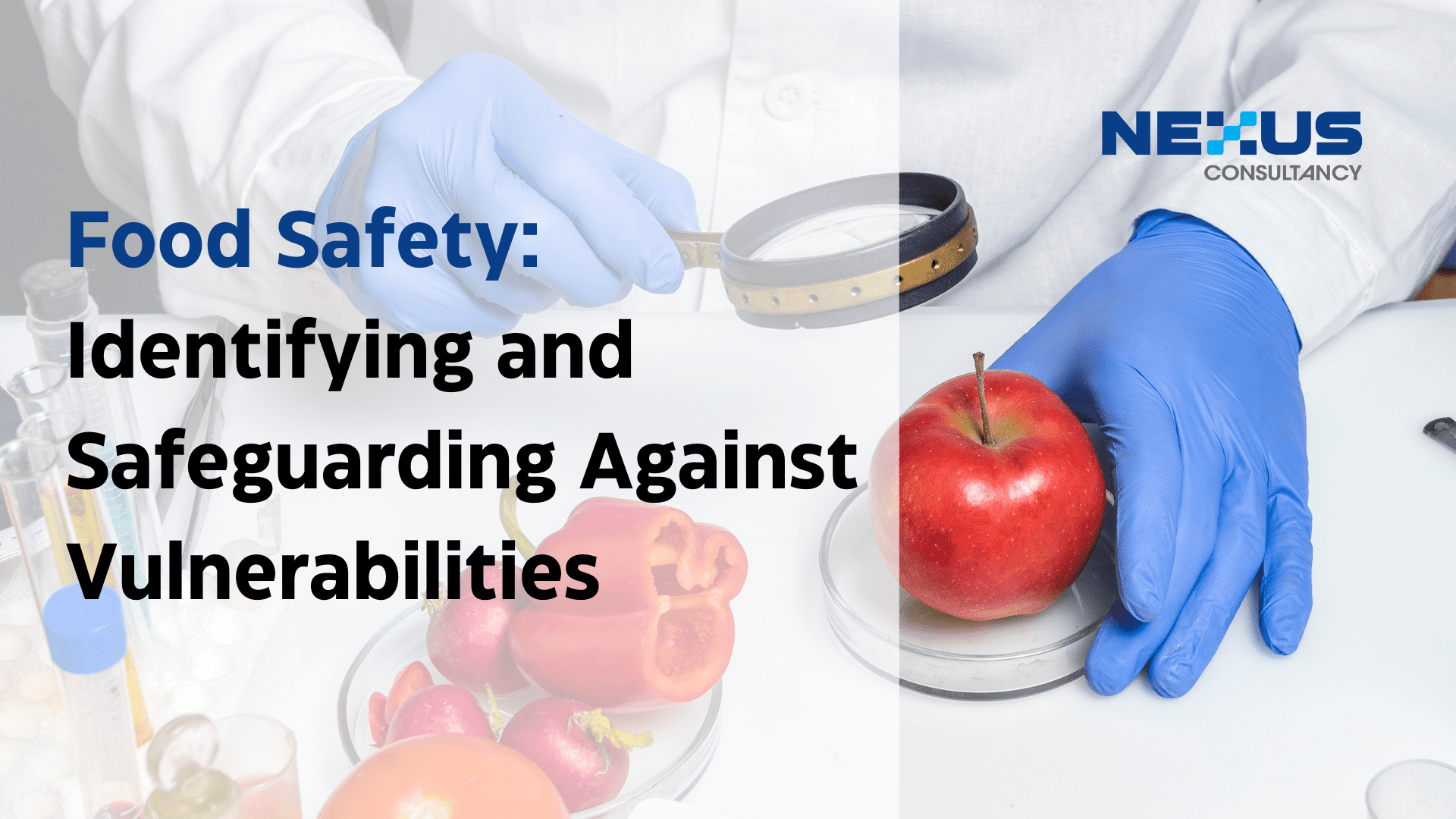
Danielle Tan
Chief Operating Officer
Identifying and safeguarding against vulnerabilities is a critical aspect of ensuring food safety and security. Training can be provided to employee to help them understand the importance of identifying potential vulnerabilities and taking steps to safeguard against them.

When conducting a thorough threat and vulnerability assessment, it is crucial to identify any significant vulnerabilities that may exist within a system or process. This could involve reviewing previous incidents, analyzing system vulnerabilities, or examining areas of potential weakness. Once these vulnerabilities have been identified, the next step is to develop and implement protection measures that will effectively mitigate these risks. This may involve implementing new protocols or technologies, enhancing existing security measures, or developing emergency response plans to address potential threats. Ultimately, the goal of any threat and vulnerability assessment is to identify and address potential risks before they can impact the safety and security of individuals or organizations, ensuring that systems and processes remain protected against potential threats.
The Standards
| FSSC 22000 version 5.1 | 2.5.3 Food Defense |
|---|---|
| 2.5.3.1 Threat Assessment | |
| 2.5.3.2 Plan | |
| 2.5.4 Food Fraud Mitigation | |
| 2.5.4.1 Vulnerability Assessment | |
| 2.5.4.2 Plan | |
| ISO 22000:2018 | 18 Food Defence, Biovigilance and Bioterrorism |
| 18.1 General Requirements | |
| 18.2 Access Controls | |
| BRCGS Food Safety Issue 9 | 4.2.1, 5.4.1 Competency of the Team |
| 4.2.2 Documented Assessment of Security | |
| 4.2.3 Additional Controls to Mitigate Risks | |
| 5.4.2 Provision of Knowledge and Information | |
| 5.4.3 Vulnerability Assessment | |
| 5.4.4 Output from the Vulnerability Assessment |
Assessment
You are required to have a strategy that is documented and which specifies how you are going to evaluate the susceptible dangers that you’ve found coming from upstream, internally and downstream.
The approach has to determine which of the vulnerabilities are important and consequently require protection measures in order to function properly. The strategy should also attempt to remove the vulnerability whenever it is practicable. For instance, if a material is vulnerable due to the location at which it is processed, you could look into switching suppliers.
In situations in which a major vulnerability is identified, you will be required to put control and preventive measures into place. In an ideal world, these should be proactive, but in cases when this isn’t possible, reactionary actions should be taken into consideration.

Control and Preventive Measures
Control and preventive measures must be implemented to mitigate significant vulnerabilities, whenever possible. These measures may include:
- Identify supply chain changes
This involves closely monitoring the supply chain and identifying any changes in supplier behavior or activity. This includes changes in the origin of the raw materials, production processes, or transportation methods. It also involves conducting thorough due diligence on new suppliers and regularly reviewing existing supplier relationships to identify any potential red flags. By proactively monitoring the supply chain, businesses can detect and prevent fraudulent activity before it causes significant harm.
- Review certificates of analysis from material suppliers and material testing
Relying solely on certificates to identify adulteration can be ineffective because fraudulent suppliers can also provide fraudulent certificates. Therefore, it is important to review and verify certificates of analysis from material suppliers via material testing.
- Supplier audits and approval.
The supplier audit may involve a review of the supplier’s facilities, production processes, and documentation. Supplier approval, on the other hand, involves an initial evaluation of the supplier before they are approved as a vendor. This includes a review of their quality systems, food safety practices, and regulatory compliance. By conducting regular supplier audits and approvals, food companies can ensure that their suppliers are meeting the required standards and mitigate the risk of fraud or contamination.
- Tamper-proof packaging or vehicle seals.
Tamper-proof packaging is designed to be opened only once, indicating any attempts to open it afterwards. Vehicle seals are placed on containers or trailers to ensure they have not been opened during transportation. By using tamper-proof packaging and vehicle seals, businesses can ensure the integrity of their products throughout the supply chain and reduce the risk of tampering or contamination.
- Access controls, perimeter fencing, restricted access.
Control who enters and exits the facility or storage areas. Access controls may include ID checks, security cameras, and biometric controls to ensure only authorized personnel are allowed entry. Perimeter fencing and restricted access help to limit the points of entry and deter unauthorized access.
- Employee training.
Employee training is a critical aspect of threat and vulnerability assessment as it ensures that all employees are aware of the potential risks and threats to the food supply chain. The training should cover topics such as food defense awareness, recognizing and reporting suspicious activities or behavior, proper handling and storage of materials, and the importance of following established protocols and procedures. By providing regular training, employees are better equipped to identify and respond to potential vulnerabilities, reducing the risk of fraud and other security breaches in the food supply chain.
By implementing these protection measures, organizations can proactively address vulnerabilities and prevent potential incidents that could impact the safety and security of their operations.
Want to Know More About Identifying and Safeguarding Against Vulnerabilities?
Identifying and safeguarding against vulnerabilities is a critical aspect of ensuring food safety and security. Training can be provided to employee to help them understand the importance of identifying potential vulnerabilities and taking steps to safeguard against them.
We recommend the following training courses:
List:
Food Defense and Food Fraud Vulnerability Assessment training 9 May 2023






